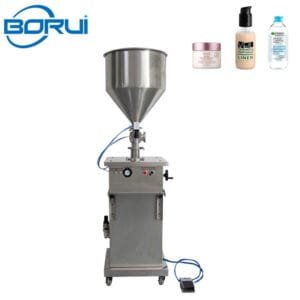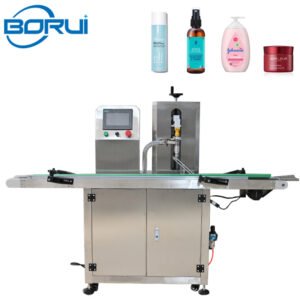What you need to know about liquid bottle filling machine?

Table of Contents
A liquid filling machine is an efficient equipment for filling various liquids, pastes, or semi-fluid products into containers. They are widely used in food, pharmaceutical, chemical, and other industries.
These filling machines have different working principles because of different methods of controlling liquid flow and filling. The common types of liquid filling machine include atmospheric filling type, pressure filling type, and vacuum filling type.
The specific working principles are as follows:
1. Atmospheric pressure filling machine:
This type of filling machine uses the liquid’s own weight for filling. Suitable for low viscosity liquids without gas, such as milk and wine.
This type of filling machine includes two kinds: timed filling and volumetric filling. When the machine is in “automatic” mode, it operates at a set speed for continuous filling. When the machine is in manual mode, operators press the foot pedal to initiate filling. If operators keep stamping the foot pedal, it switches to automatic continuous filling mode.
2. Pressure filling machine:
These machines operate at pressures higher than atmospheric pressure. They are suitable for liquids containing gas, such as beer, soda, and champagne.
Pressure filling machines include two types: isobaric filling and high-pressure differential filling.
In isobaric filling, the tank and bottle have equal pressure, allowing the liquid to flow naturally into the bottle.
In high-pressure differential filling, the tank pressure is higher than the bottle so that the liquid will flow into the bottle. Common in high-speed production lines.
3. Vacuum filling machine:
A vacuum filling machine fills containers when the pressure inside the bottle is lower than atmospheric pressure. It adopts continuous vacuum suction to draw the material into the container. A vacuum pump connected to a vacuum chamber and a special filling valve generates continuous suction.
This filling equipment is easy to use, works well with various viscosities, and is suitable for oil, syrup, fruit wine, etc.
Components of a liquid bottle filling machine:
1. Liquid storage tank: Filling machines usually have a liquid storage tank. The filling head draws the liquid into the filling machine through pipes during the filling process.
2. Filling head: The filling head is the core component of the liquid filling system. It extracts the liquid from the tank and flows it into the container. The filling head typically completes the liquid extraction and filling process through a pressure and negative pressure device.
3. Control system: The control system usually consists of a PLC controller and a touchscreen. Users can set parameters through the PLC controller and control and monitor the filling machine. The touchscreen provides a user-friendly interface for human-machine interaction and is easy to operate and debug.
Filling process:
The automatic filling machine first transports empty containers to the filling area via a conveyor belt. The system uses sensors to locate and count containers, ensuring they are in the correct position.
Next, the filling head moves to the opening of the container according to the preset program. The machine has one or more metering devices, such as piston pumps, gear pumps, or peristaltic pumps, to control the amount of each filling. After location, the metering device transfers the product from the tank into the container. You can set and monitor this process through the control system.
Throughout the filling process, the automatic filling machine also monitors the filling status in real-time through various sensors. For instance, pressure sensors monitor pressure changes to ensure consistent filling, while flow sensors detect product flow for accurate filling.
In summary, automatic filling machines adopt advanced electrical control, precise mechanical transmission, and accurate sensor detection technology. It can achieve automatic container positioning, precise product metering, and real-time monitoring of the filling process. This highly automated operation greatly improves production efficiency and ensures product quality and hygiene standards.
Application
Liquid filling machines are widely used in various industries. They are essential equipment for enterprises to achieve product production automation and improve production efficiency.
In the cosmetics industry, liquid filling machines can meet the filling operations of bottles of various specifications, providing convenience for cosmetics manufacturers. When filling cosmetics, liquid filling machines can also achieve product mixing and stirring, increasing the consistency of cosmetic ingredients.
In the food industry, liquid filling machines mainly fill liquid foods such as beverages, fruit juices, and milk. With high flexibility, simple operation, and fast filling speed, they can effectively improve production efficiency and product quality, reducing the cost of manual operation.
In the chemical industry, liquid filling machines can fill different chemical liquids like detergents, paints, and inks. They can improve product quality, enhance work efficiency, and reduce labor costs.
As technology advances, liquid filling machines become more intelligent, efficient, and environmentally friendly, providing enterprises better services and support.


